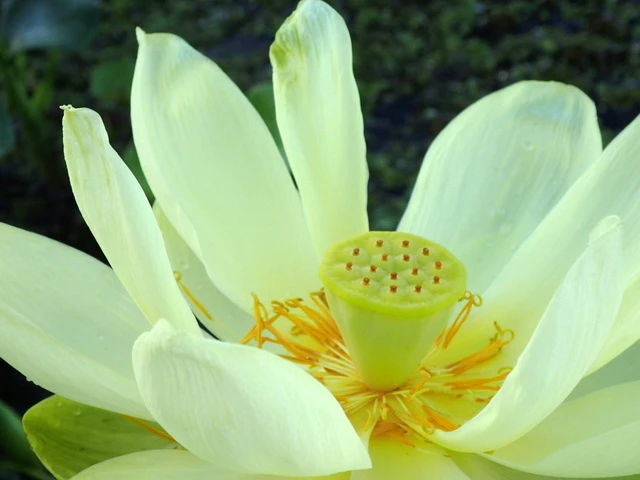American Lotus
(Nelumbo lutea)
American Lotus (Nelumbo lutea)
/
/

mfeaver
CC BY 4.0




















































Estimated Native Range
Climate Requirements for Paragould, Arkansas
| This Plant | Your Site | Plant Suitability for Your Location | ||
|---|---|---|---|---|
| • Precipitation | 16" - 151" | 49" | Aquatic | Aquatic |
| • High Temp. | 66°F - 100°F | 92°F | Your summer temperatures are normal for this plant. | Excellent |
| • Low Temp. | 0°F - 73°F | 27°F | Your winter temperatures are normal for this plant | Excellent |
Summary
The American Lotus is valued for its striking flowers and is used in water gardens and naturalized pond settings. It provides habitat and food for wildlife but is also the larval host plant for the American lotus borer, Ostrinia penitalis. While it offers ecological benefits, it requires a commitment to maintenance due to its size and the potential for spreading. In cultivation, it thrives in full sun and requires high amounts of water, adaptable to various soil drainage conditions. Gardeners should be aware that Nelumbo lutea can become invasive outside its native range, and it is essential to consult local regulations before planting.CC BY-SA 4.0
Plant Description
- Plant Type: Herb
- Height: 3-6 feet
- Width: 3-4 feet
- Growth Rate: Moderate
- Flower Color: Cream, White, Yellow
- Flowering Season: Summer
- Leaf Retention: Deciduous
Growth Requirements
- Sun: Full Sun
- Water: High
- Drainage: Fast, Medium, Slow
Common Uses
Bee Garden, Bird Garden, Deer Resistant, Edible*Disclaimer: Easyscape's listed plant edibility is for informational use. Always verify the safety and proper identification of any plant before consumption., Fragrant, Showy Flowers, Water Garden
Natural Habitat
Native to marshes, floodplains, and the edges of ponds and lakes in the eastern and central United States, as well as parts of the Caribbean
Other Names
Common Names: American Nelumbo, Water-Chinquapin, Yellow Lotus, Lotus Jaune D’Amérique, Nélumbo, Volée
Scientific Names: Nelumbo lutea, Nelumbium luteum, Nelumbo pentapetala, Nelumbo nucifera subsp. lutea, Nelumbium jamaicense, Cyamus flavicomus, Cyamus luteus, Cyamus mysticus, Cyamus nelumbo
GBIF Accepted Name: Nelumbo lutea (Willd.) Pers.